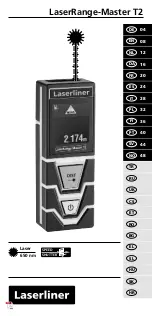
2
Go Direct Electrode Amplifier mV response is dictated by the amplifier (as
opposed to the electrode) and does not change over time, temperature, or with
the electrode being attached. Calibration of Go Direct ORP in mV by putting it
into different standards does not provide a better mV calibration. It provides a
worse calibration as it will assume the ORP electrode is perfect. Then the mV
reading will be off regardless of which electrode is connected.
Specifications
Response time
90% of final reading is one second in a buffer
Range
–1,000 mV to +1,000 mV
Typical accuracy
± 15 mV
Resolution
0.01 mV
USB specification
2.0
Wireless specification
Bluetooth 4.2
Maximum wireless range
30 m
Dimensions
EA: 8.5 cm × 3 cm × 1.75 cm
ORP: 15.5 cm long, 12 mm OD
Battery
300 mA Li-Poly
Battery life (single full
charge)
~24 hours
Battery life (long term)
~500 full charge cycles (several years depending
on usage)
Care and Maintenance
Short-term storage (up to 24 hours):
Place the electrode in pH 4 or pH 7 buffer
solution. It should never be stored in distilled water.
Long-term storage (more than 24 hours):
Store the electrode in a pH 4
buffer/KCl storage solution in the storage bottle. The ORP electrode is shipped
in this solution. Vernier sells 500 mL bottles of pH Storage Solution (order code
PH-SS), or you can prepare additional storage solution by adding 10 g of solid
potassium chloride (KCl) to 100 mL of pH 4 buffer solution. Vernier sells a pH
Buffer Capsule kit (PH-BUFCAP) that includes a buffer solution preservative.
Storing the electrode in this solution contributes to electrode longevity and
retains electrode response time when the unit is placed back into service.
If the electrode is inadvertently stored dry for a short period of time, immerse the
tip in the pH 4 buffer/KCl storage solution for a minimum of 8 hours prior to
use. If the readings are still not accurate after calibration or if the response is
slow, try shocking the sensor as described in the Troubleshooting section.
Connecting via Bluetooth
Ready to connect
Red LED flashes when sensor is awake and
ready to connect.
Connected
Green LED flashes when sensor is connected via
Bluetooth.
Connecting via USB
Connected and charging
Blue and Green LED are solid when sensor is
connected to Graphical Analysis via USB and
unit is charging. (Green LED is obscured by the
blue one.)
Connected, fully charged
Green LED solid when sensor is connected to
Graphical Analysis via USB and the unit is fully
charged.
Charging via USB,
connected via Bluetooth
Blue LED is solid and green LED is flashing, but
the green flashing LED looks white because it is
overwhelmed by the blue.
Identifying the Sensor
When two or more sensors are connected, the sensors can be identified by
tapping or clicking Identify in Sensor Information.
Using the Product
1. Remove the storage bottle from the electrode by unscrewing the lid and
removing the bottle and lid.
2. Thoroughly rinse the lower section of the probe, especially around the bulb-
shaped tip, using distilled or deionized water.
3. Connect the sensor following the steps in the Getting Started section of this
user manual.
4. When you are finished making measurements, rinse the electrode with
distilled water.
5. Slide the cap onto the electrode body, and then screw the cap onto the
storage bottle so the tip of the electrode is immersed in the storage solution.
Important:
Do not fully submerge the sensor. The BNC connection is not
waterproof.
Do not leave the electrode in acids or bases with concentrations greater than
1.0 M for periods longer than 5 minutes.
By default, the units displayed will be in mV. See
to
change the displayed units.
Calibrating the Sensor
Calibration of Go Direct ORP is not supported. ORP readings are in mV. The






















